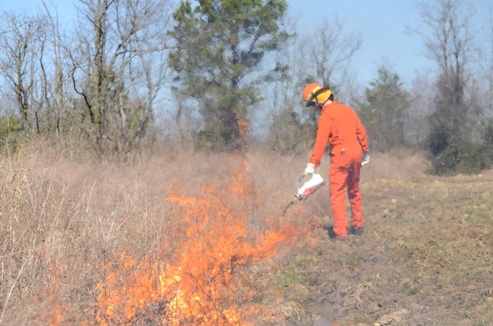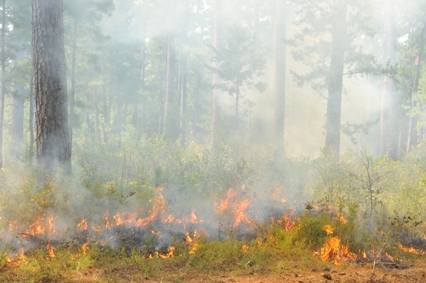The bobwhite quail was first deemed the ‘fire bird” by Herbert Stoddard, author of the 1931 classic; The Bobwhite Quail: Its Habits, Preservation, and Increase. The bobwhite earned this nickname due to its positive response to fire. “Prescribed fire” is the purposeful application of fire to achieve a specific vegetation management objective under a prescribed set of environmental circumstances, including season, wind speed and direction, temperature, humidity and smoke dispersal. Wildfire is fire that occurs under uncontrolled circumstances, typically under high wind and low humidity which create an extremely hot, difficult to control fire which is detrimental under most situations. Prescribed fire is arguably the single most effective and cost efficient method of management for bobwhites. Unfortunately, fire has been excluded from much of its habitat, which is a contributing factor to the bobwhites decline.


Prescribed fire is a necessary component of grassland, long and short leaf pine and hardwood savannas to maintain their productivity and attractiveness for bobwhite quail. Wildfire, on the other hand, can be very destructive in pine and hardwood habitat, which is why it is important that land managers include regular prescribed fire in their management regimes to maintain habitat and protect from devastating wildfires. One of NBCI’s key strategies is to promote prescribed fire throughout the bobwhites range.
Click here to visit our collection of Prescribed Fire documents.

